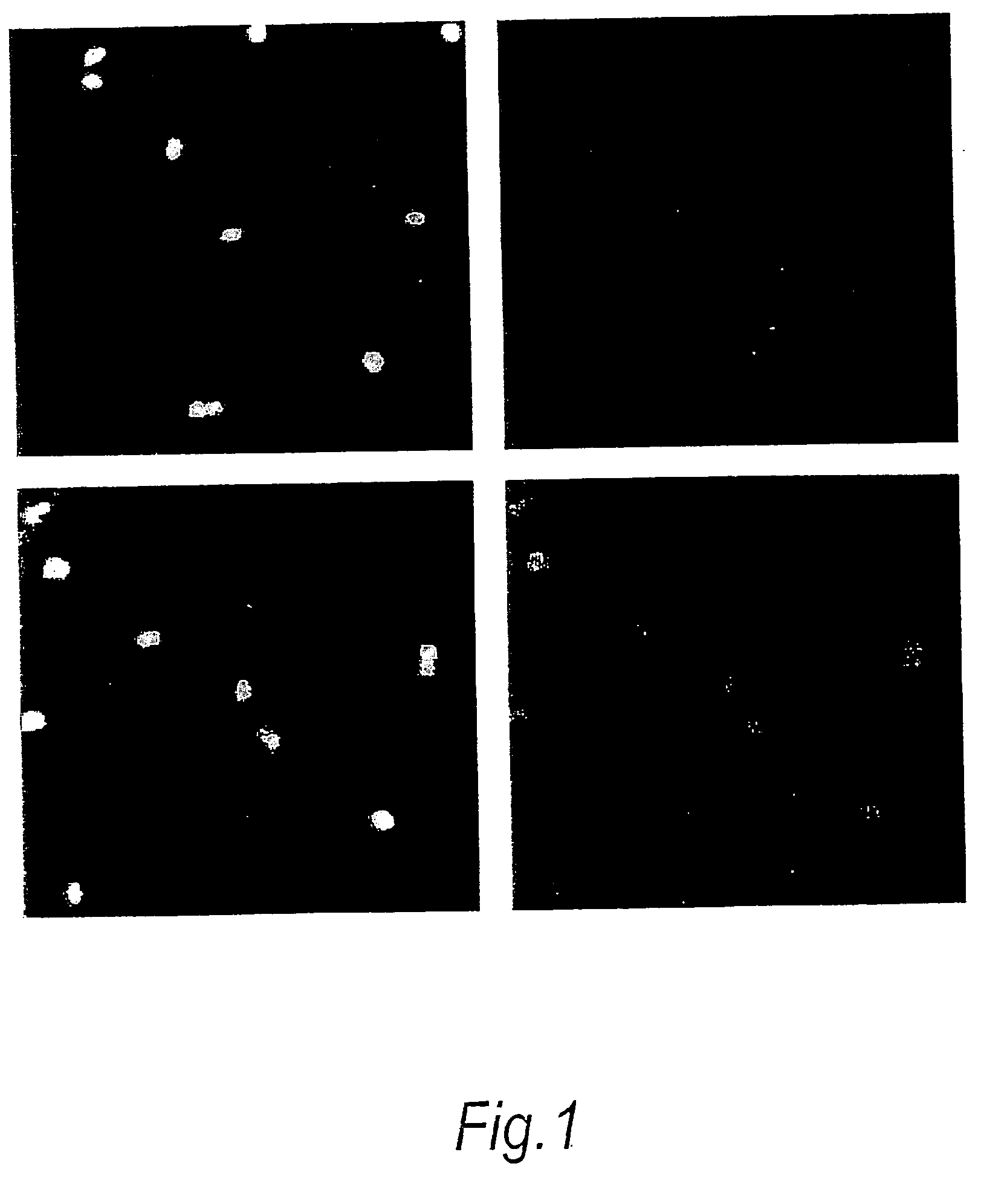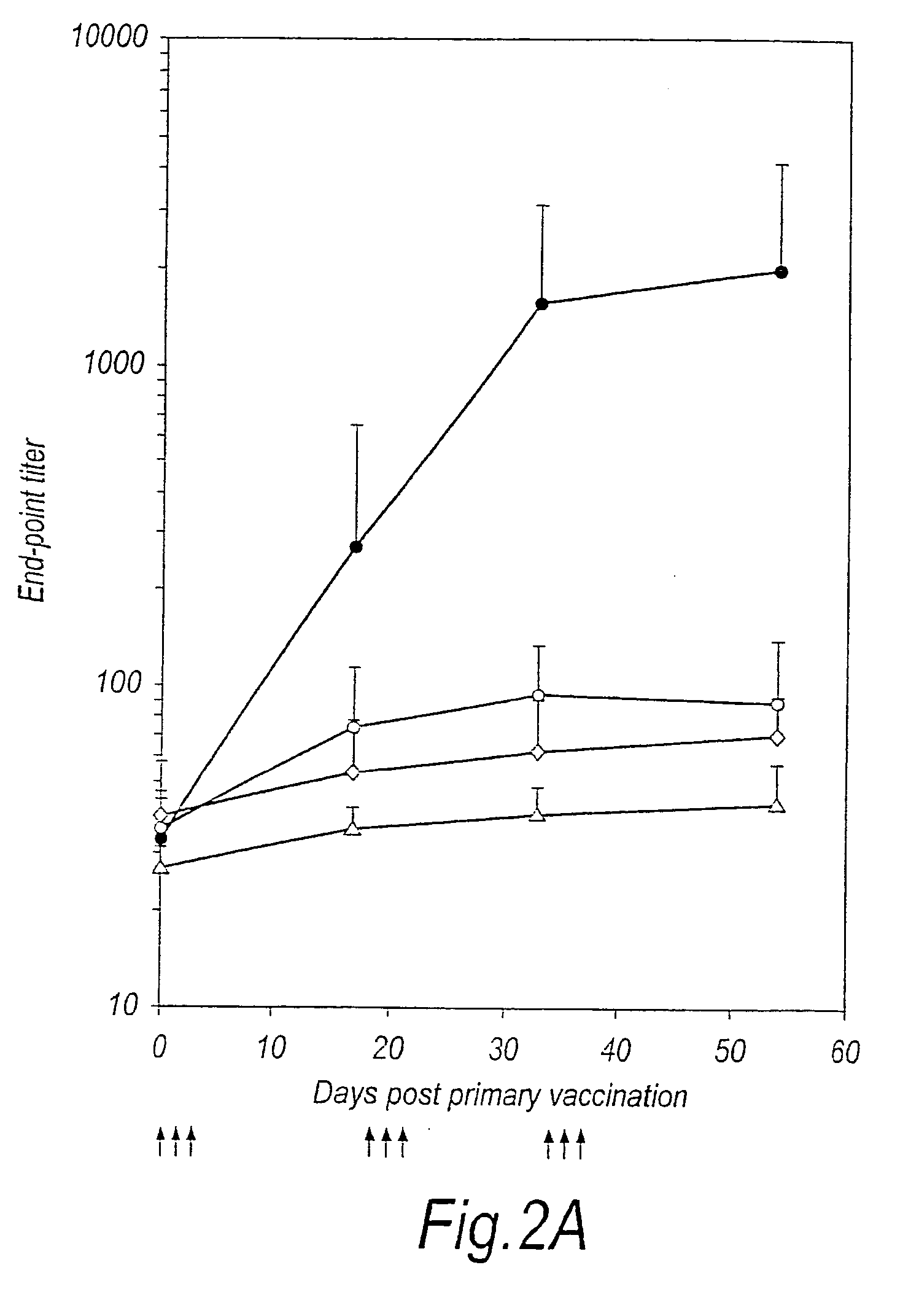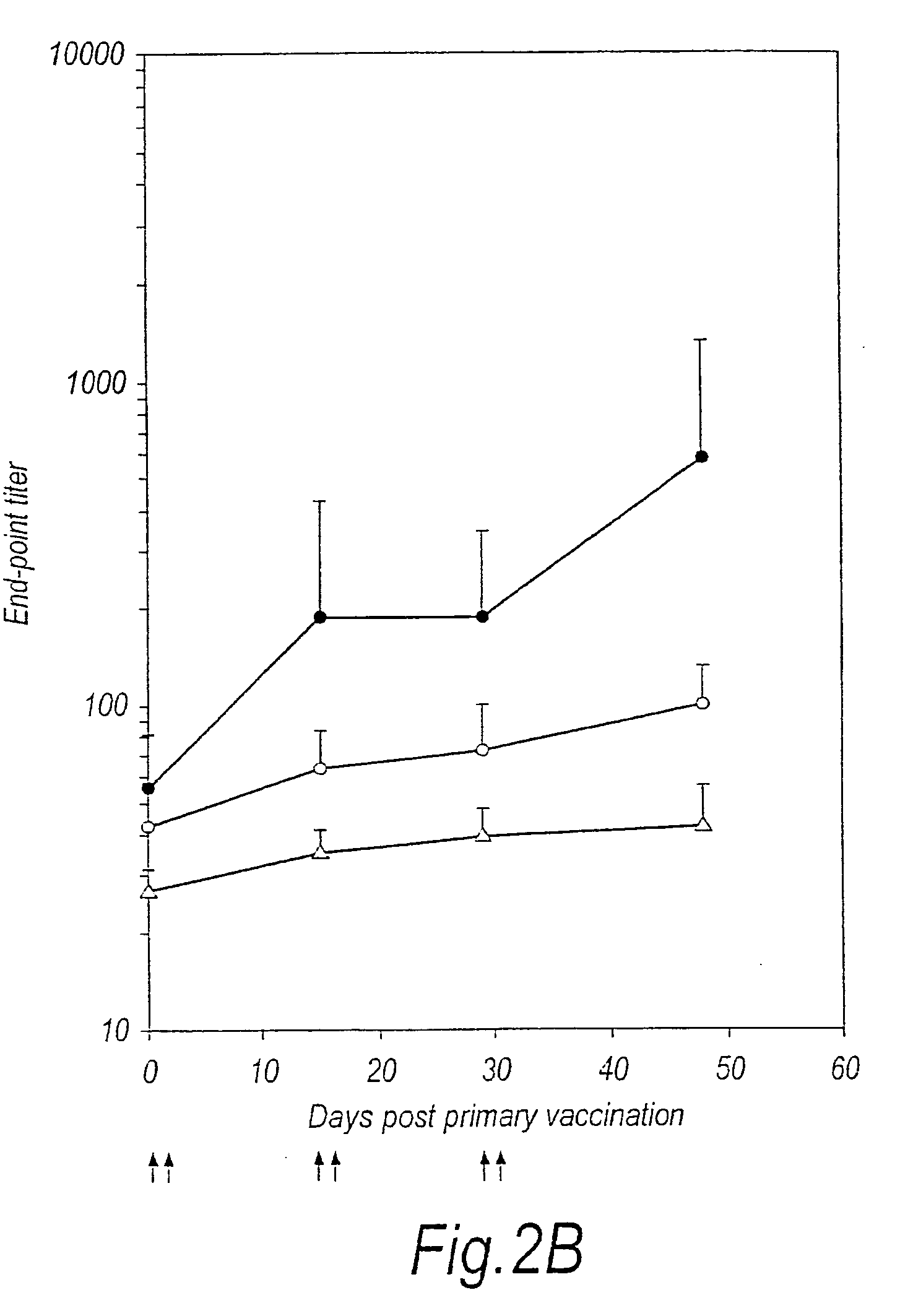Bacterial spores
a technology of spores and bacteria, applied in the field of bacteria spores, can solve the problems of high mortality from tetanus, need at least one injection, and death in human populations, and achieve the effects of reducing the need for injections and the associated problems, low cost, and easy production
- Summary
- Abstract
- Description
- Claims
- Application Information
AI Technical Summary
Benefits of technology
Problems solved by technology
Method used
Image
Examples
example 1
[0053] Chimeric genes were constructed in which TTFC or LTB gene sequences were fused, in frame, to a specific cot gene. The constructs were then introduced into the chromosome of B. subtilis. Expression of the chimeric genes was then confirmed and immunisations were performed using inbred mice (Black C57 inbreds). Immune responses were then measured. Unless otherwise stated, cot genes refers to cotA, cotB, cotC, cotD, cotE and cotF.
TABLE 1Recombinant chimeric genesTTFC1LTB2TTFC & LTBcotA-TTFCCotA-LTBcotA-LTB cotB-TTFCcotB-TTFCCotB-LTBCotA-LTB cotE-TTFCcotC-TTFCCotC-LTBcotA-LTB cotD-TTFCcotD-TTFCCotD-LTBcotE-TTFCCotE-LTBcotF-TTFCCotF-LTB
1placed at the amyE locus
2placed at the thrC locus
a) Construction of Chimeric Genes
[0054] PCR (polymerase chain reaction) was used to amplify the specific cot gene to enable the 3′-end of the amplified cot gene sequence to be fused to the 5′-end of a similar PCR product carrying the 5′-end of TTFC or LTB. Ligation PCR products was achieved by r...
example 2
Materials and Methods:
Preparation of Spores
[0073]B. subtilis strain RH103 (amyE::cotB-tetC) was used for all immunisations together with its isogenic ancestor, PY79 (2). RH103 has been described elsewhere (3) and carries a fusion of tetanus toxin fragment C (TTFC; 47 kDa) to the C-terminus of the outer spore coat protein CotB (59 kDa). The chimeric cotB-tetC gene was carried at the amyE locus of B. subtilis and was therefore in trans to the endogenous cotB gene. Sporulation of either RH103 or PY79 was made in DSM (Difco-sporulation media) media using the exhaustion method as described elsewhere (1). Sporulating cultures were harvested 22 h after the initiation of sporulation. Purified suspensions of spores were made as described by Nicholson and Setlow (1) using lysozyme treatment to break any residual sporangial cells followed by washing in 1 M NaCl, 1 M KCl and water (two-times). PMSF was included to inhibit proteolysis. After the final suspension in water spores were treated ...
PUM
| Property | Measurement | Unit |
|---|---|---|
| temperature | aaaaa | aaaaa |
| optical density | aaaaa | aaaaa |
Abstract
Description
Claims
Application Information
 Login to View More
Login to View More - R&D
- Intellectual Property
- Life Sciences
- Materials
- Tech Scout
- Unparalleled Data Quality
- Higher Quality Content
- 60% Fewer Hallucinations
Browse by: Latest US Patents, China's latest patents, Technical Efficacy Thesaurus, Application Domain, Technology Topic, Popular Technical Reports.
© 2025 PatSnap. All rights reserved.Legal|Privacy policy|Modern Slavery Act Transparency Statement|Sitemap|About US| Contact US: help@patsnap.com



